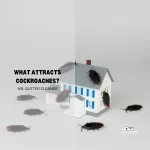Homeowners often notice birds perching or nesting on their roofs, a phenomenon that sparks curiosity and concern. Birds are drawn to roofs for various reasons, including the search for shelter, food, and nesting sites. Factors such as the availability of food sources nearby, the structure of the roof, and the presence of predators influence their choice.
Seasonal patterns also play a significant role, with certain times of the year seeing increased roof activity due to migration or breeding seasons.
The impact of birds on roof health can be significant; their nesting materials can clog gutters, leading to water damage, and their acidic droppings can deteriorate roofing materials.
Recognizing the species of birds commonly found on roofs and understanding their behavior are crucial first steps in addressing this issue.
Implementing preventive measures, such as regular roof inspections and maintenance, can help deter birds from nesting on roofs.
Additionally, understanding legal and ethical considerations is essential for homeowners seeking to manage bird presence effectively.
This introduction sets the stage for a deeper exploration of why birds choose roofs for perching and nesting and how homeowners can mitigate any negative effects while respecting wildlife laws.
Understanding Bird Behavior
Birds are attracted to roofs for reasons such as shelter, food, and nesting opportunities. Architectural features of roofs, including ledges, eaves, and gutters, provide perfect spots for birds to rest, hide, or build their nests. Additionally, proximity to food sources significantly increases a roof’s attractiveness to birds. Seasonal patterns play a crucial role in bird roof activity, with increased visits during breeding seasons in spring and summer for nesting. In contrast, autumn and winter see birds seeking shelter from the cold. Recognizing these factors and seasonal trends is essential for homeowners aiming to manage bird presence effectively, ensuring the maintenance of their home’s integrity while minimizing potential damage.
What Attracts Birds to Roofs?
Birds are drawn to roofs due to the shelter, food availability, and nesting opportunities they provide. Architectural features like ledges and gutters offer ideal spots for rest and nest-building. Roofs near food sources, such as gardens or trash bins, are especially attractive. This behavior underscores the need for homeowners to manage waste and maintain gutters to deter unwelcome avian visitors.
Seasonal Patterns in Bird Roof Activity
Bird activity on roofs varies seasonally, peaking during the spring and summer breeding seasons when birds seek out safe nesting sites. In autumn and winter, birds may use roofs for shelter against cold. Recognizing these patterns allows homeowners to take preemptive measures to minimize bird presence, protecting their homes from potential damage while coexisting with local wildlife.
Impacts of Birds on Roof Health
Birds on roofs can lead to several issues affecting the integrity and functionality of roofing systems. Their presence can cause physical damage, blockages in gutters and downspouts, and lead to the accumulation of droppings, which are acidic and can erode roofing materials over time.
How Can Birds Damage Your Roof?
Birds can damage roofs through persistent pecking, nest building, and the accumulation of droppings. Pecking can compromise the roofing material, while nests block water flow in gutters, leading to potential water damage. The acidity in bird droppings can also weaken roofing materials, making them more susceptible to damage.
Signs of Bird-Related Roof Damage
Homeowners should watch for signs like visible nests in gutters, accumulated droppings, and damaged roof shingles. Blocked gutters can cause water to overflow, leading to further damage or damp issues within the property.
The Role of Dirty Gutters in Bird Nesting
Dirty gutters offer an attractive nesting site for birds, providing both material for nest building and a sheltered location away from predators.
Why Dirty Gutters Appeal to Nesting Birds
Gutters filled with leaves and debris provide an ideal environment for birds to build nests. This not only shelters them but also offers materials for construction, making dirty gutters a prime target for nesting birds.
Preventing Nesting in Gutters to Protect Roof Integrity
Regular cleaning and maintenance of gutters are crucial in deterring birds from nesting. Installing gutter guards can also prevent the accumulation of debris that attracts birds, safeguarding the roof’s integrity and ensuring proper water drainage.
Identifying Common Roof-Visiting Birds
Understanding which bird species are commonly found on roofs can aid homeowners in addressing bird-related issues more effectively. By identifying these species, homeowners can tailor prevention and mitigation strategies to the specific behaviors and preferences of these birds.
Species of Birds Commonly Found on Roofs
Common roof-visiting birds include pigeons, sparrows, starlings, and seagulls. These species are drawn to roofs due to the availability of food, water, and nesting sites. Pigeons, for instance, are particularly adaptable and can be found in urban and suburban areas, making them one of the most common birds observed on roofs.
Unique Characteristics of Roof-Dwelling Birds
Each species of roof-dwelling bird has unique characteristics that influence their behavior and preferences for nesting and roosting. Pigeons, for example, prefer flat surfaces for nesting and are known for their homing abilities. Sparrows and starlings often seek out small crevices or under eaves to build their nests, while seagulls, being larger birds, require more open spaces and are often attracted to roofs in coastal or landfill-adjacent areas for the availability of food. Understanding these characteristics can help homeowners implement more effective deterrents and protections for their homes.
Preventive Measures and Solutions
To mitigate the issues caused by birds on roofs, homeowners can adopt several preventive measures and solutions. These strategies not only discourage birds from nesting on roofs but also protect the home’s structural integrity.
How to Discourage Birds from Nesting on Your Roof
Implementing deterrents is key to preventing birds from choosing your roof as their nesting site.
Installing Physical Barriers
Physical barriers such as spikes, nets, and bird slides can be effective in making roofs less accessible or attractive to birds. These barriers prevent birds from landing or nesting on ledges and eaves, directly addressing the areas most susceptible to bird activity.
Utilizing Visual and Auditory Deterrents
Visual deterrents like reflective tapes, decoy predators, or shiny objects can scare birds away, as they mimic the presence of predators or create an uncomfortable environment for birds. Auditory deterrents, including ultrasonic devices and predator calls, can further discourage birds from approaching the area.
Safe and Humane Bird Removal Techniques
If birds have already established nests, it’s important to remove them safely and humanely. Consulting with wildlife experts or professional bird removal services ensures that the removal process complies with local wildlife protection laws and is done in a manner that does not harm the birds.
When to Seek Professional Help
For persistent bird issues or when dealing with protected species, seeking professional help is advisable. Wildlife control professionals can offer customized solutions, ensuring that bird removal is effective, ethical, and legal. They can also provide advice on long-term prevention strategies to keep birds from returning.
Maintenance Tips for a Bird-Free Roof
Maintaining a bird-free roof requires regular inspection and proactive measures to deter birds and prevent them from nesting or causing damage. These maintenance tips ensure your roof remains in good condition, free from the issues birds might bring.
Regular Roof Inspection and Maintenance
Regularly inspect your roof for signs of bird activity, such as nests, droppings, or damage. Early detection can prevent minor issues from becoming major problems. Clean your gutters and downspouts to remove debris that may attract birds looking for nesting materials. Ensure that any roof damage is repaired promptly to eliminate potential nesting sites.
Choosing Bird-Resistant Roofing Materials
When possible, opt for bird-resistant roofing materials. Metal roofing, for example, is less attractive to birds for nesting compared to traditional shingles. Additionally, consider installing slope adapters on flat surfaces to discourage birds from landing and nesting on your roof.
Legal and Ethical Considerations
Navigating the legal and ethical landscape is crucial when dealing with birds on your roof. Homeowners must balance effective bird deterrence and removal with respect for wildlife laws and ethical treatment of animals.
Understanding Wildlife Protection Laws
Wildlife protection laws, including federal and state regulations, often protect birds. For instance, the Migratory Bird Treaty Act in the United States provides protection to over 1,000 bird species. Before taking any action to remove birds or disrupt nests, homeowners should familiarize themselves with these laws to ensure compliance. Violations can result in hefty fines and legal repercussions.
Ethical Bird Control and Conservation Efforts
Ethical bird control emphasizes humane methods for deterring and removing birds from your roof. This includes using non-lethal deterrents and consulting with professionals for safe removal. Conservation efforts also play a role; homeowners are encouraged to consider the ecological impact of bird populations and to support habitat conservation initiatives. Ethical practices not only comply with legal standards but also contribute to the well-being of local bird populations, reflecting a commitment to coexisting with wildlife in a responsible manner.


